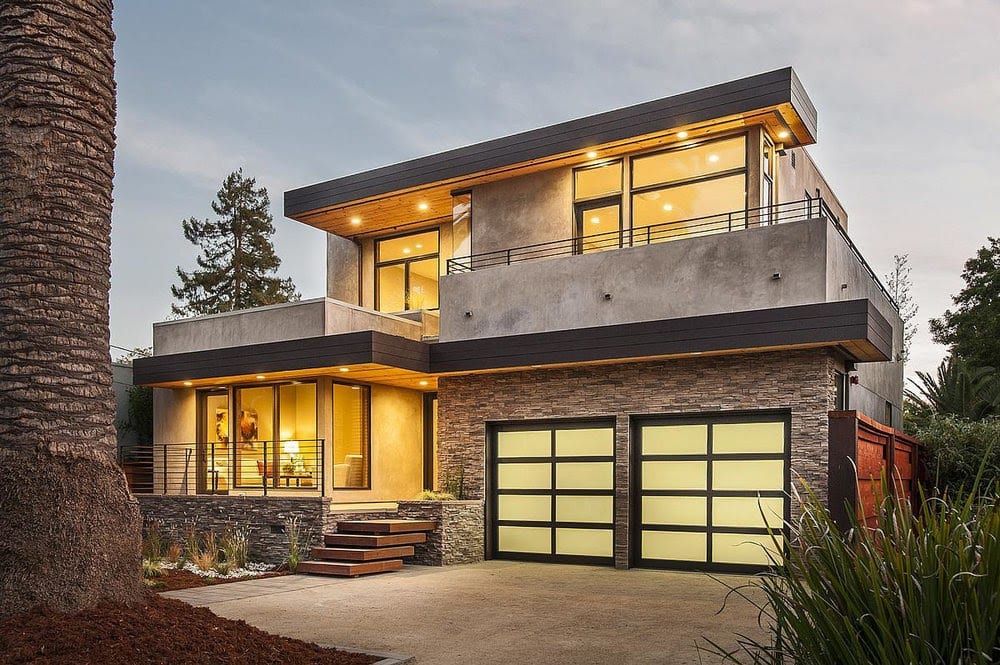Modular homes are gaining popularity for their efficiency, affordability, and sustainability. Unlike traditional homes, these prefabricated structures are built in sections or modules in a factory setting and then assembled on-site. This method allows for better quality control, reduced construction time, and lower costs.
As homeowners and eco-conscious consumers become more environmentally aware, modular homes offer an attractive alternative. Whether you’re a real estate enthusiast looking to explore innovative housing options or someone seeking a cost-effective and energy-efficient home, modular homes could be the perfect solution. This article will guide you in finding the best modular home that fits your budget.
Table of Contents
Understanding Modular Homes
What Are Modular Homes?
Modular homes are a type of prefabricated building that is manufactured in sections or modules. Unlike mobile homes, modular homes are built to the same local building codes as site-built homes, ensuring quality and safety. These modules are constructed in a factory, transported to the building site, and assembled on a permanent foundation.
Modular homes differ from traditional homes in several ways. They are constructed in a climate-controlled environment, which reduces the risk of weather delays and on-site construction waste. This method also allows for precise manufacturing, resulting in higher-quality construction. Additionally, modular homes tend to be more cost-effective due to the economies of scale achieved in factory production.
Advantages of Modular Homes
One of the primary advantages of modular homes is their cost-effectiveness. Because the construction process is streamlined and materials are purchased in bulk, modular homes often cost less than traditional site-built homes. They are a desirable choice for first-time homebuyers or those wishing to downsize because of their affordability.
Another benefit is the faster build time. Since modules are constructed in a factory, they can be built concurrently with site preparation. This parallel process can significantly reduce the overall timeline for building a home, allowing homeowners to move in sooner.
Modular homes are also environmentally friendly. The factory construction process minimizes waste, and many manufacturers use sustainable materials and energy-efficient designs. These eco-friendly practices contribute to lower utility bills and a reduced carbon footprint.
Key Factors to Consider
When considering a modular home, several factors should guide your decision. First, consider the dimensions and arrangement that will work best for you.
Whether you need a compact space for urban living or a sprawling floor plan for a large family, modular homes offer a wide range of customization options.
Energy efficiency is another important consideration. Look for homes with features such as high-quality insulation, energy-efficient windows, and eco-friendly heating and cooling systems. These features not only reduce environmental impact but also save money on energy bills.
Lastly, consider the resale value and durability of the home. Modular homes built to high standards can have similar resale values to traditional homes. Ensure the manufacturer is reputable and uses quality materials to ensure your investment stands the test of time.
Best Modular Homes by Budget
Budget-Friendly Options (Under $10,999)
Affordable modular homes are an excellent choice for singles, couples, or small families seeking to enter the housing market without breaking the bank. These homes typically feature compact layouts and basic amenities, providing everything you need in a cozy package.
One popular budget-friendly model is the “Prefabricated” which offers a one-bedroom, one-bathroom layout with a small kitchen and living area. This model is perfect for single professionals or retirees looking for a low-maintenance home. The “Prefabricated” is constructed with energy-efficient materials and offers the option for solar panels, making it both affordable and eco-friendly.
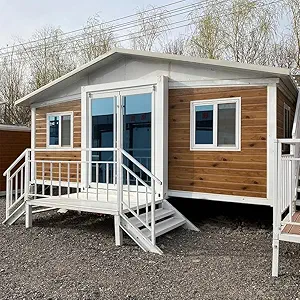
This expandable container house combines practicality with style, featuring a bathroom, kitchen, and a modern prefab design. Ideal for tiny home living or modular setups, it offers a compact yet versatile space in 20ft or 40ft sizes.
Another great option is the “Family Starter” model, which includes two bedrooms and one bathroom. This compact design is ideal for small families or couples planning for the future. The open-concept living and dining area makes the space feel larger, while the energy-efficient appliances keep utility costs low.
Mid-Range Modular Homes ($20,000 – $40,000)
Mid-range modular homes offer larger layouts and higher-quality materials, making them perfect for growing families or those seeking upgraded amenities. These homes often include multiple bedrooms, bathrooms, and additional features such as upgraded kitchens and living spaces.
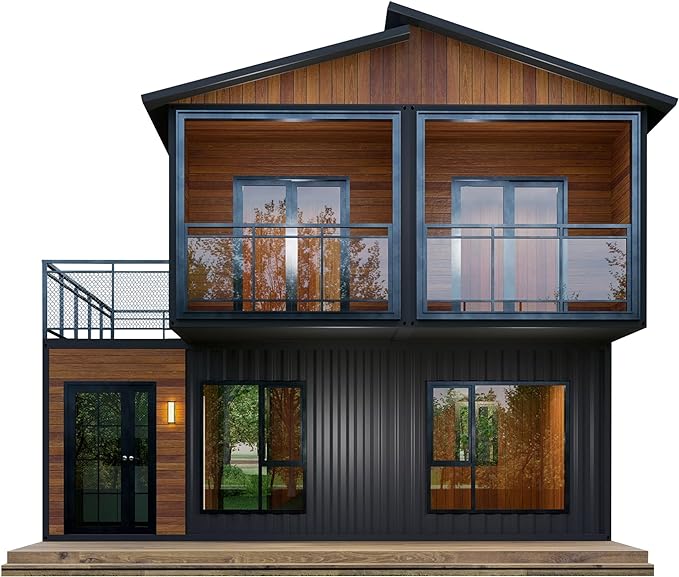
A foldable, double-story barn-style home designed for convenience and comfort. This 20ft flat-pack house includes a bathroom, kitchen, and modular construction, making it perfect for tiny home living or mobile setups.
The “Double-Story” model is a popular choice in this price range. With three bedrooms and two bathrooms, it provides ample space for a family. The open-concept kitchen and living area are perfect for entertaining, while the energy-efficient design keeps utility costs in check. Customization options include hardwood flooring, stainless steel appliances, and a choice of exterior finishes.
For those seeking a unique design, the “Contemporary Cabin” offers a modern twist on traditional cabin living. This model features three bedrooms, two bathrooms, and a spacious living area with large windows to bring in natural light. The eco-friendly construction includes high-quality insulation and solar panels, reducing the home’s environmental impact.
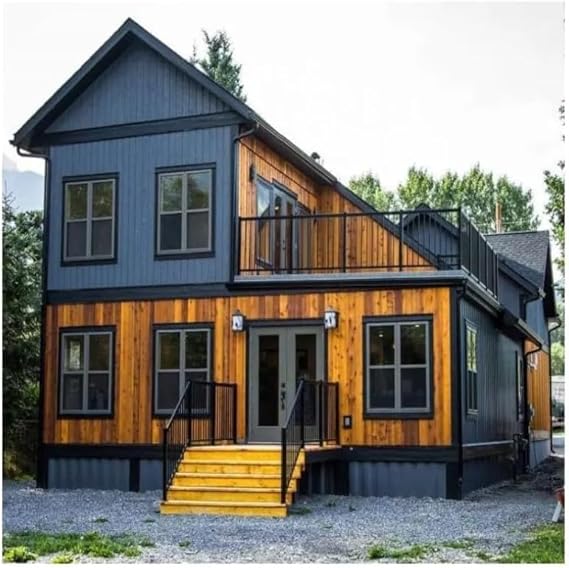
Double-Story Prefab Container House with Terrace
This double-story prefab container home features a terrace, stairs, and compact design for adults. Ideal as a mobile or mini modular house, it provides a practical living solution with a modern touch.
Luxury Modular Homes (Above $200,000)
Luxury modular homes provide a dream home experience, with high-end features such as smart technology, premium finishes, and custom designs. These homes are ideal for buyers looking to invest in a high-quality, sustainable living space.
One standout option in this category is the “S.E.Q” which offers four bedrooms, three bathrooms, and an expansive living area. This home is equipped with smart home technology, allowing homeowners to control lighting, security, and climate from their smartphones. The high-end finishes include granite countertops, hardwood flooring, and custom cabinetry, creating a luxurious atmosphere.
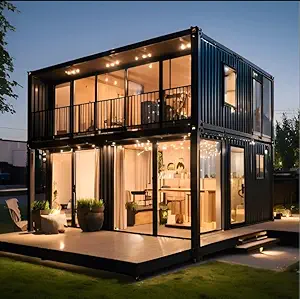
Luxury Weather-Resistant Double-Story Beach Home
A luxurious, weather-resistant, and rust-proof beach home designed for comfort and mobility. This double-story modular guest house includes a bedroom, bathroom, and kitchen, making it perfect for 40ft by 20ft living spaces.
Another luxurious choice is the “Eco-Estate,” which emphasizes sustainability without sacrificing style. This model features four bedrooms, three bathrooms, and an open-concept design that seamlessly integrates indoor and outdoor living spaces. The energy-efficient construction includes geothermal heating, solar panels, and a rainwater collection system, making it a truly eco-conscious choice.
Choosing the Right Modular Home
How to Set a Budget
Setting a realistic budget is a crucial step in choosing the right modular home. Consider your financial situation, including savings, income, and existing debt. It’s essential to have a clear understanding of what you can afford before beginning your home search.
Take into account the cost of the modular home itself, as well as additional expenses such as site preparation, permits, and utility hookups. Remember to factor in any desired upgrades or customizations, as these can add to the overall cost. It’s a good idea to build a buffer into your budget to account for unexpected expenses.
Customization vs. Pre-Designed Models
When choosing a modular home, you’ll need to decide between a customized design and a pre-designed model. Each option has its pros and cons, depending on your needs and preferences.
Customization allows you to create a home that perfectly suits your lifestyle and tastes. You can choose everything from the floor plan to the finishes, ensuring your home is one-of-a-kind. However, customization can be more expensive and time-consuming than selecting a pre-designed model.
Pre-designed models, on the other hand, offer a quicker and more cost-effective option. These homes come with predetermined layouts and features, which can streamline the purchasing process. While you may have fewer options for personalization, many manufacturers offer a variety of design choices to suit different preferences.
Understanding Additional Costs
When budgeting for a modular home, it’s crucial to consider the additional costs beyond the purchase price. These expenses can include delivery fees, site preparation, permits, and utility hookups.
Delivery fees can vary depending on the distance between the factory and the building site. Site preparation involves clearing the land, laying a foundation, and connecting utilities, which can add to the overall cost. Permits may be required by local authorities, so it’s essential to research the requirements in your area.
Utility hookups are another consideration, as you’ll need to connect your modular home to electricity, water, and sewage systems. Ensure you’re aware of any fees associated with these connections and factor them into your budget.
Tips for Financing Your Modular Home
Financing a modular home can be similar to financing a traditional home, but there are some key differences to consider. It’s essential to explore your options and choose the best mortgage for your situation.
Traditional mortgages, such as fixed-rate and adjustable-rate loans, may be available for modular homes. However, some lenders may require a construction loan to cover the cost of building the home before converting it into a mortgage once construction is complete.
Additionally, consider financial planning strategies to ensure you’re prepared for the ongoing costs of homeownership. This includes setting aside funds for maintenance, repairs, and property taxes. Consulting with a financial advisor can help you develop a plan tailored to your needs.
Conclusion
Modular homes offer a unique blend of affordability, versatility, and sustainability. By understanding your budget, customization options, and additional costs, you can make an informed decision when choosing the right modular home for your needs.
Consider consulting with professionals and exploring the offerings of top manufacturers to find the perfect modular home for your lifestyle and budget. With proper planning and research, you can turn your dream of owning a modular home into a reality.
So why wait? Start researching and planning today to make your dream home a reality! Remember to keep in mind the benefits of eco-conscious features like thermal heating, solar panels, and rainwater collection systems when making your final decision. Your new modular home will
FAQs
Q: Can I customize a pre-designed modular home?
A: Yes, many manufacturers offer a variety of design choices for their pre-designed models.
Q: Are there additional costs to consider when purchasing a modular home?
A: Yes, delivery fees, site preparation, permits, and utility hookups are all potential additional expenses.
Q: How can I finance my modular home?
A: Traditional mortgages or construction loans may be available for financing a modular home. Consult with lenders to find the best option for your situation.
Q: What are some top modular home manufacturers?
A: Clayton Homes, Champion Home Builders, and Skyline Homes are all reputable manufacturers known for their high-quality modular homes.


